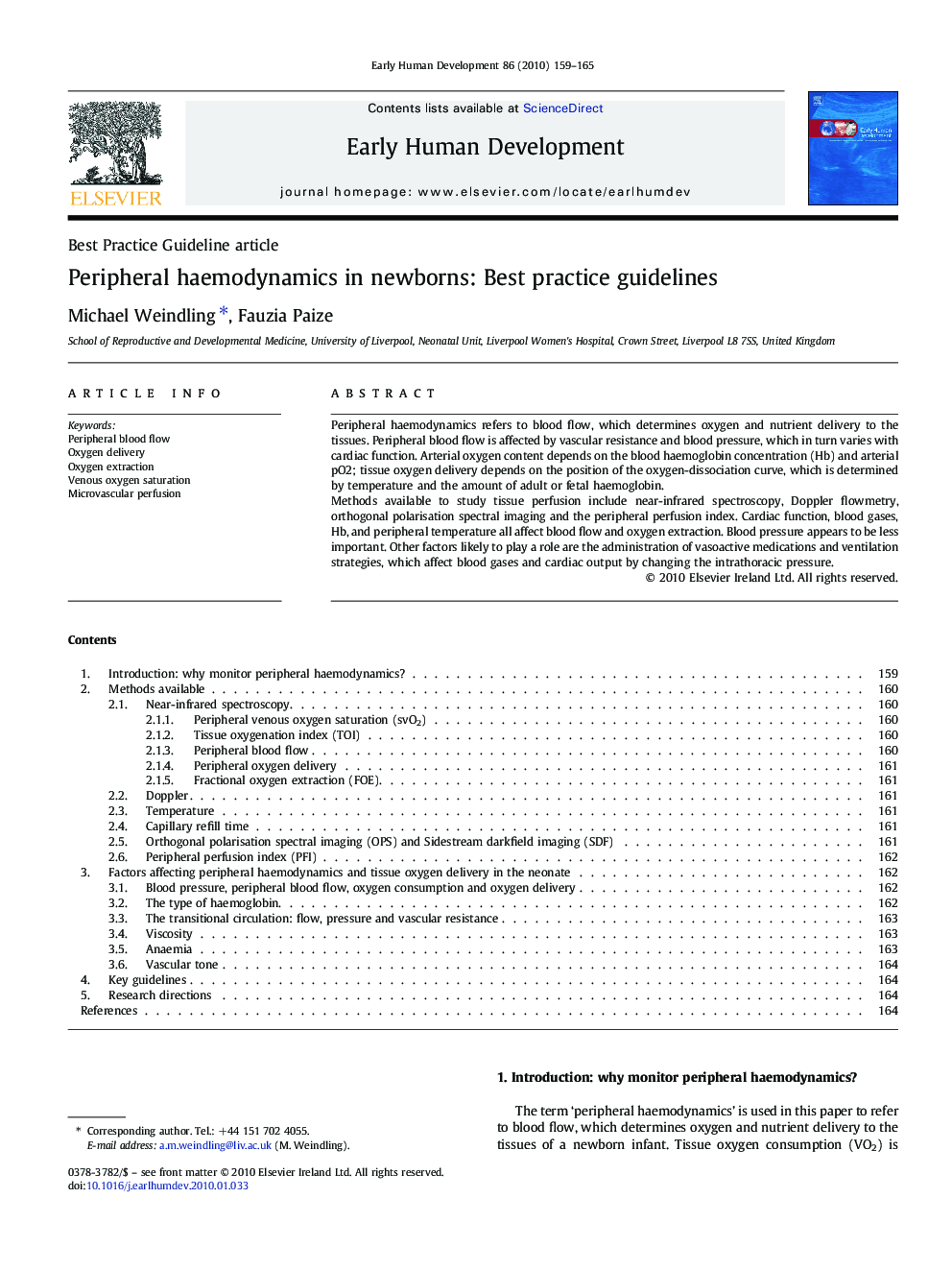| Article ID | Journal | Published Year | Pages | File Type |
|---|---|---|---|---|
| 3917644 | Early Human Development | 2010 | 7 Pages |
Peripheral haemodynamics refers to blood flow, which determines oxygen and nutrient delivery to the tissues. Peripheral blood flow is affected by vascular resistance and blood pressure, which in turn varies with cardiac function. Arterial oxygen content depends on the blood haemoglobin concentration (Hb) and arterial pO2; tissue oxygen delivery depends on the position of the oxygen-dissociation curve, which is determined by temperature and the amount of adult or fetal haemoglobin.Methods available to study tissue perfusion include near-infrared spectroscopy, Doppler flowmetry, orthogonal polarisation spectral imaging and the peripheral perfusion index. Cardiac function, blood gases, Hb, and peripheral temperature all affect blood flow and oxygen extraction. Blood pressure appears to be less important. Other factors likely to play a role are the administration of vasoactive medications and ventilation strategies, which affect blood gases and cardiac output by changing the intrathoracic pressure.
